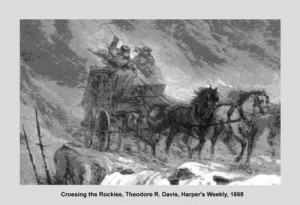Brief by Allen Best
Energy – September 2008 – Colorado Central Magazine
The new trophy home, proclaimed the New York Times, is small and ecological.
The newspaper tells that story from the perspective of Venice, Calif., home to movie stars, and cites one woman who says that something energy-conscious “doesn’t have to look as if you got it off the bottom shelf of a health-food store.”
But not just any “green” house will do. The Times explains that certification by LEED -an acronym for Leadership in Energy and Environmental Design -is the new hot designer label, kind of like driving a Prius.
There are four levels of LEED certification: basic, silver, gold and, at the highest level, platinum. So far this year, 10,250 new home projects have registered for one of these levels of LEED certification, more than triple from 2006, the first year of the pilot home-rating system, says the Times.
Bearing testimony to this trend is a report in the Vail Daily of a new “lifestyle” residential complex in Gypsum, between Vail and Glenwood Springs. There, the developer of a project called Sky Legend has homes of up to 4,500 square feet.
But the firm, ASW Realty Partners, is also building smaller homes, most between 1,700 and 2,500 square feet. So far, eight homes are certified to the silver level of LEED. In all, about half of the 247 units planned at Sky Legend may be LEED certified.
Not everyone is a fan of LEED certification. The Aspen Skiing Co. used the LEED certification process for its projects several years ago, but found a “Soviet-style bureaucracy,” to use the phrase of Auden Schendler, the company’s executive director for environmental and community responsibility. Using a more modern metaphor, energy activist Randy Udall of Carbondale, down-valley from Aspen, calls the review process an “Abu Ghraib.”
The U.S. Green Building Council, progenitor of the LEED certification, claims it has made the certification process easier. But it remains expensive for a large structure, which is why the Eagle County School District decided to forego LEED certification for its replacement of Battle Mountain High School.
Instead, the LEED checklist will be used as a guide, to achieve the same results, claims John Fuentes, an architect with H + L Architecture. He says that avoiding certification will save the school district tens of thousands of dollars.
The Vail Daily reports the new school, to be completed a year from October, will be naturally lit, meaning light from the outdoors will be telescoped into classrooms. It is likely that no light bulbs will be needed until sunset, said Fuentes. Air conditioning will be installed in the computer rooms and administration offices. Also to cut down on electrical use, rooms will be fitted with occupancy sensors, meaning that when no one is in the room, any lit lights will go off.


